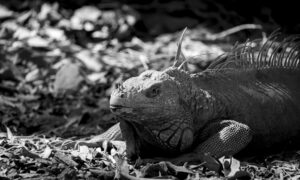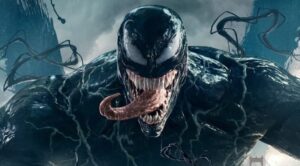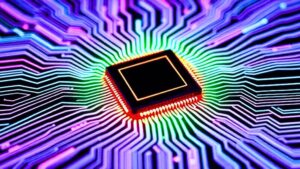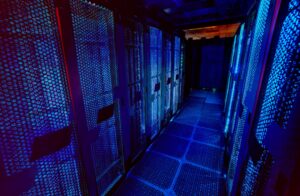Nikola Tesla, the legendary and enigmatic inventor, is renowned for championing alternating current (AC), creating the Tesla Coil, and—according to some—developing a so-called “death ray” and a vision of free electricity for all. Born in 1856 in what is now Croatia (then part of the Austrian Empire), Tesla was raised in a family of contrasting influences. His father, an Orthodox priest, wanted him to join the clergy, but young Nikola was enthralled by science. His mother, though unschooled, had a talent for creating labor-saving devices, and Tesla credited her as the source of his inventive spirit.
Education and Early Challenges
At the age of 17, Tesla fell gravely ill and spent nine months bedridden. His father, hoping to encourage his recovery, promised him a top-tier scientific education if he got well. Tesla thrived academically at the Austrian Polytechnic in Graz, where he earned the highest marks and developed an intense fascination with electricity. He became so absorbed in his studies that he hardly slept—a habit he maintained throughout his life. His professors even warned his family that the intensity of his work might endanger his health.
Despite early success, Tesla’s academic career took a downward turn. He lost his scholarship and became addicted to gambling, squandering his allowance. This early financial instability foreshadowed challenges that plagued him throughout his life. When he failed to prepare for final exams, a request for an extension was denied, and Tesla dropped out, never completing his degree. After a few difficult years, he found work as Chief Electrician at the Budapest Telephone Exchange, where he developed and refined a telephone amplifier.
Career Beginnings: From Paris to New York
Tesla then moved on to the Continental Edison Company in Paris, where he worked on electric lighting systems. His skill earned him a transfer to New York to work directly under Thomas Edison. In one notable incident, after working overnight to repair the SS Oregon’s generators, Tesla ran into Edison, who quipped, “I see our Parisian has been out all night!” Upon hearing of Tesla’s work, Edison admitted, “This is a darn good man.” Tesla began designing an arc lighting system for Edison, though it was never adopted. Eventually, Tesla left Edison’s company, citing unpaid bonuses and tension with Edison himself. He marked his resignation in his diary with the words: “Goodbye to the Edison Machine Works.”
Struggles and Breakthroughs
Tesla then launched his own firm, Tesla Electric Light & Manufacturing, securing several patents. Despite bearing his name, the company was controlled by investors. When they chose to pivot to a new business model, Tesla was left penniless. In 1886, he was forced to dig ditches to survive. He later wrote, “My high education in science, mechanics, and literature seemed like a cruel joke.” Yet Tesla bounced back, inventing a revolutionary motor powered by alternating current—a system eventually acquired by George Westinghouse.
The War of Currents and AC Power
A passionate advocate for AC, Tesla joined Westinghouse Electric Company, earning $2,000 a month plus bonuses. At the time, a fierce rivalry—known as the “War of Currents”—erupted between Edison and Westinghouse over the safety and efficiency of AC versus DC power. Edison resorted to unethical publicity stunts to portray AC as dangerous, but Tesla’s designs prevailed.
Innovation and Wireless Ambitions
With newfound wealth, Tesla established his own labs and research teams. This period marked the height of his creativity. In 1891, at age 35, he became a U.S. citizen and patented the Tesla Coil. He also began exploring wireless lighting and electricity transmission, demonstrating it publicly but never securing commercial backing. In one demonstration, Tesla claimed his system could transmit “intelligible signals or power to any distance without wires.” He became obsessed with the idea of wireless global power transmission.
Tesla also explored wireless telegraphy, reporting mysterious signals he believed might have originated from another planet. In 1899, he published an article titled Talking With Planets. Some modern experts believe Tesla may have unknowingly intercepted signals from Marconi’s experiments. He continued pouring money into his wireless telegraphy research, borrowing heavily from J.P. Morgan. But when Marconi transmitted the first transatlantic message, investors flocked to Marconi’s system, leaving Tesla financially stranded once more.
Later Life and Personal Struggles
By 1906, Tesla is thought to have suffered a nervous breakdown. After living at the Waldorf Astoria Hotel since 1900, he moved to the St. Regis in 1922, leaving unpaid bills behind. He continued moving from hotel to hotel, always feeding pigeons from his window. Despite financial hardship, Tesla spent over $2,000 creating a device to heal an injured pigeon. He once said of her, “There was one—a beautiful bird, pure white with light grey wingtips. It was a female. I only had to wish for her, and she would come flying. I loved that pigeon as a man loves a woman, and she loved me. As long as I had her, my life had meaning.”
Tesla never married, believing that romantic relationships would interfere with his scientific pursuits. In his later years, he befriended young science fiction writer Kenneth Swezey, who helped organize Tesla’s birthday celebrations. At one such event, Tesla claimed to have developed a cosmic-ray motor that could operate for 500 years and a machine capable of photographing thoughts.
The “Death Ray” and Final Years
He also unveiled a weapon he called “teleforce,” or a “peace ray,” which he claimed could destroy 10,000 airplanes at a distance of 200 miles. When asked about its development, Tesla insisted, “It is not an experiment. I have built, demonstrated, and used it. Soon, the world will see it.”
Nikola Tesla died alone in his hotel room in 1943 at the age of 86. His ashes are now preserved in a gold-plated sphere at the Nikola Tesla Museum. Just two days after his death, the FBI seized his possessions. An MIT professor, John Trump, was assigned to review the materials and concluded after three days that there was “nothing that would constitute a hazard in unfriendly hands.”






